Reviews
Bill Gunn
USA, 1973
Credits
Review by Adam Balz
Posted on 14 October 2012
Source Image Entertainment DVD
Categories 31 Days of Horror IX
When Bram Stoker’s Dracula was published in 1897 it introduced the world to what would become one of literature’s - and cinema’s - most iconic monsters. The monster drew immediate comparisons to historical figures like Elizabeth Bathory and Vlad the Impaler, but Stoker’s inspirations for the archetypical vampire seem to have been more contemporaneous: immigrants from continental Europe and epidemics that followed in their wake.
Stoker, however insensitively, was adapting social conditions in turn-of-the-century Britain for use in his novel, investing in his many characters, especially Dracula himself, a complex and touchy metaphorical utility. This utility, over the last few decades, has made its way into Dracula’s cinematic depictions, used extensively by writers and directors of all creeds and colors, including - to much variety and entertainment - African-Americans. On Thursdays throughout the month, we will examine the role of vampires as metaphors, as well as how those metaphors have shifted and changed according to evolving American social mores.
Dr. Hess Green, the central character in Bill Gunn’s Ganja & Hess, lives in a collapsing antebellum mansion located in an all-white neighborhood, has his own butler and chauffeur, owns a Rolls Royce, and sends his son to a private school where he has become fluent in French. But of more importance are the contents of his house—artifacts from cultures and societies throughout the world. In their 1991 article “Ganja and Hess: Vampires, Sex, and Addiction,” Manthia Diawara and Phyllis R. Klotman make a passing reference to Dr. Hess Green’s profession and the furnishings of his home: “Early in the film we know that Green works as an anthropologist and archivist in a museum… and decorates his mansion with art from Africa, Asia, and Europe.” The artifacts highlight, at least in part, the underlying theme throughout Gunn’s film: the confusion over identity.
Ganja and Hess opens with a montage of Greek art—nudes in various poses, many of which, as noted by Diawara and Klotman, are “alabaster figures, inordinately white, as though the camera has chosen to shoot them in the brightest possible light.” These sculptures are juxtaposed against a soundtrack of traditional African music: a struggle between tradition and modernity, between African heritage and Euro-centric values. The struggle continues throughout much of Gunn’s film, including many of the early scenes: the battle between his “white bourgeois materialist” living - nice suits, fancy cars, a large mansion with an African-American butler and chauffeur, all of which acts as a kind of vampirism preceding Green’s transformation - and his African heritage. Green is, in a sense, also a traitor - for adorning his home with artifacts that should act as a exemplars of pride but only underscore his dismissal of heritage for money - which, ironically, is the very thing Ganja admits to wanting after she arrives at Hess’ home.
Ganja, appearing forty minutes into the film, is looking for her husband George—Hess’ assistant who, in a fit of apparent instability, stabbed Hess three times with an ancient dagger before himself being killed. (Unbeknownst to Ganja, her husband’s body is being kept in the cellar.) When Ganja arrives, she does so in the back of an expensive car, an image that recalls Hess’ own means of travel, and immediately mistakes the learned man for hired help. When she learns he is Hess Green, her husband’s partner and a man of exquisite taste and refinement, her attitude shifts: she is suddenly attracted to Green and, seated across from one another on the patio after having sex - after she is bitten - Ganja offers her true motivations while simultaneously taunting Hess’ butler, Archie, with insinuations about his “blackness” by suggesting grits, a traditional Southern food, for a meal:
Ganja
Archie, when you get the grape jelly… well then, why don’t you get the grits at the same time?Archie
Grits.Ganja
Grits. Hominy grits. You know what hominy grits are, don’t you?Archie
Hominy grits.Ganja
Hominy grits.
Even after she discovers her husband’s frozen body in the cellar and confronts Hess, she doesn’t leave his home, shrugging off his homicidal ways by saying that everyone is “some kind of freak.”
Gunn’s view of religion throughout Ganja and Hess is ambiguous, as the entire structure of his film confuses the cause of vampirism with its cure. Hess, as we learn in the opening titles, is stabbed three times by George - once for the Father, once for the Son, and once for the Holy Ghost - with an ancient dagger. Here is another direct contrast between tradition, represented by the weapon, and Christianity, which is manifested in the symbolism of three; without the introductory titles, these facts would be unknown to us, which makes their inclusion even more noteworthy.
Similarly, the church that Hess enters to release himself of his vampirism near the film’s close is led by his chauffeur, an upstanding young preacher who is depicted at the foot of a large cross delivering his lessons. This image of the embodiment of Christianity - one of the film’s few long shots - is followed by an interesting transition: the preacher, standing before his congregation, becomes the hood ornament on Hess’ car—a silver angel with her arms outstretched. The camera then cuts to show us that same preacher behind the wheel of Hess’ car, acting as his chauffeur—as a modern slave to Hess’ vampire archaeologist.
On the other hand, Ganja never seeks Western religion to cure herself of vampirism; instead, she views her curse as something else: life. The closing shot of Gunn’s film shows Ganja standing at a window in Hess’ home, peering out to the pool where she and Hess were married. By now, Hess has already stepped into the shadow of a cross to end his life, and the possibility remains that Ganja made chose to do the same. And yet, as the scene continues, we see a young man - Ganja and Hess’ last victim, a local activist - emerge from the swimming pool, naked. This moment recalls a baptism, a cleansing of the soul, as though becoming a vampire is equal to being given a fresh new existence.
And so we are left with conflicting messages. Hess, troubled by his murderous ways, ends his life by the cross, while Ganja rejuvenates her own life with a new lover, a new eternal companion, who emerges from a body of water anew and, in the process of running to Ganja, leaps over Archie’s body. The butler, splayed across the lawn, is presumably dead—but whether he has been killed or bitten is unknown, and we’re left to wonder: did Ganja’s feelings about Archie, how she viewed him as nothing more than a traitor to his race, force her to “cure” him of his own disease?
Harry M. Benshoff, in examining Gunn’s conflicting use of religion in an article on Blaxploitation horror films, writes that,
Within the film’s ambiguous diegesis, Hess finally allows himself to be destroyed by somewhat traditional means, first by embracing the black Christian church and then by committing suicide in the shadow of the cross, an act that raises pertinent questions about the relationship between Christianity and African American culture. Within the film, vampirism is Afrocentric… Thus, when he succumbs to Western Christian morality, he seems to be denying his African heritage.
Complementing Benshoff’s opinion is a short, almost overlookable scene in which Hess wanders into the poorer side of town in search of a prostitute. When he finds a young woman standing on the street and they walk into her building together, the scene cuts to a shot of Hess standing alongside her bed. He has bitten her, and there is an eerie silence except for the crying of her child in a crib nearby. Hess has, in feeding on the young woman, seemingly robbed her infant of its mother—a symbolic robbing of the African-American future. Hess’ thirst for blood has begun depriving young black children the chance at a decent future, and this scene is complemented during the closing credits, when we see a still shot of young black children lined up for the camera.
Unlike those of the Blacula films released around the same time, the metaphors of Ganja and Hess aren’t ones that could have been easily digested by mainstream audiences—if the film had been given a commercial release, that is. Edited by the producers against Gunn’s wishes, despite winning major festival awards overseas, the film was only reissued in its original state - at least, as close as one could come to it - in the 90s, long after the era of so-called Blaxploitation films had ended. Bill Gunn and star Duane Jones had both been dead for almost a decade, while actress Marlene Clark hadn’t appeared in a feature film since 1977. The African-American vampires of the 1970s had been replaced, not by a new form of monster, but by a new form of themselves.
More 31 Days of Horror IX
-
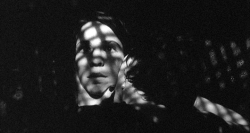
The Addiction
1995 -

Psycho III
1986 -
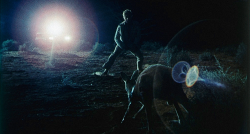
Wake in Fright
1971 -

Blacula
1972 -
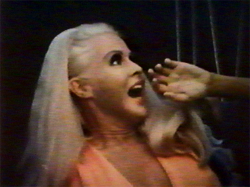
Big Foot
1970 -

Trollhunter
2010 -

Invasion from Inner Earth
1974 -

In the Company of Men
1997 -

Happy Birthday to Me
1981 -
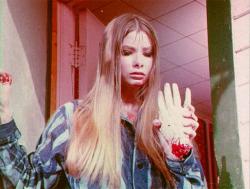
I Drink Your Blood
1970 -

The Legend of Boggy Creek
1972 -

Maximum Overdrive
1986 -
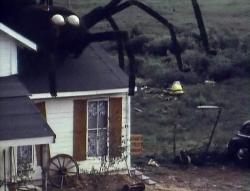
The Giant Spider Invasion
1975 -

Ganja & Hess
1973 -
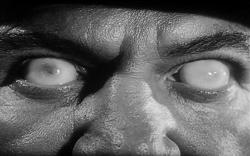
Not of This Earth
1957 -

Let’s Scare Jessica to Death
1971 -
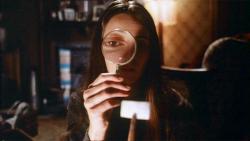
Next of Kin
1982 -
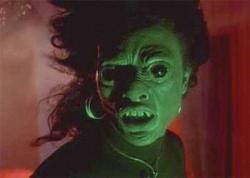
Def by Temptation
1990 -
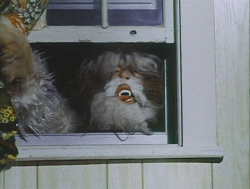
Shriek of the Mutilated
1974 -
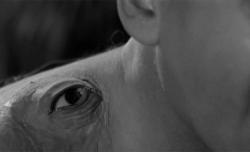
The Manster
1959 -
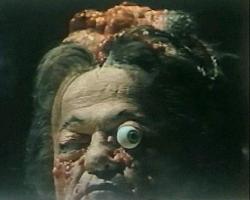
The Alpha Incident
1978 -
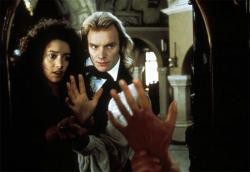
The Bride
1985 -

Planet of the Vampires
1965 -

The Hole
2009 -
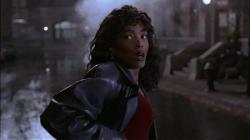
Vampire in Brooklyn
1995 -

Sasquatch: the Legend of Bigfoot
1977 -

Mad Love
1935 -
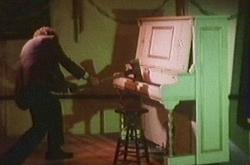
The Demons of Ludlow
1983 -

Habit
1997 -

Elephant
1989 -
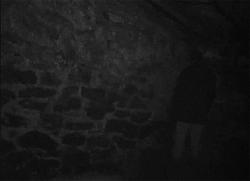
The Blair Witch Project
1999
We don’t do comments anymore, but you may contact us here or find us on Twitter or Facebook.



